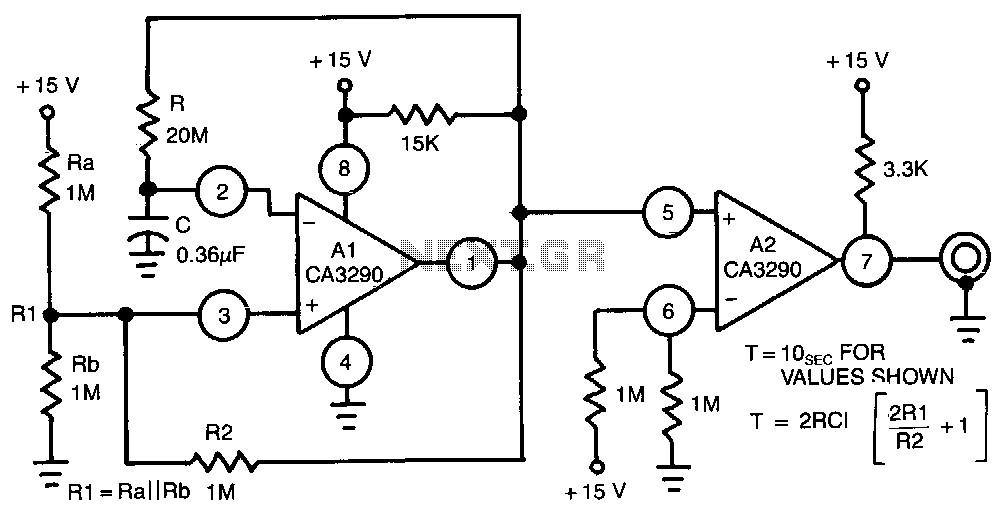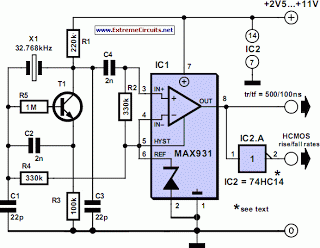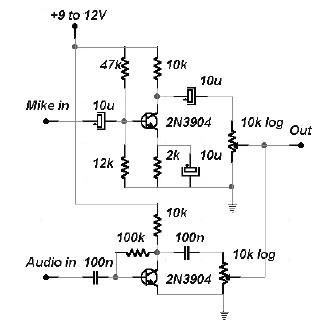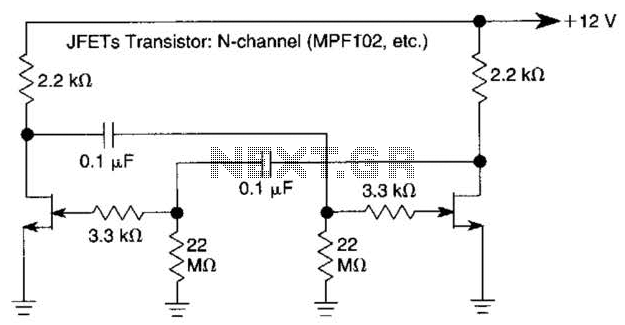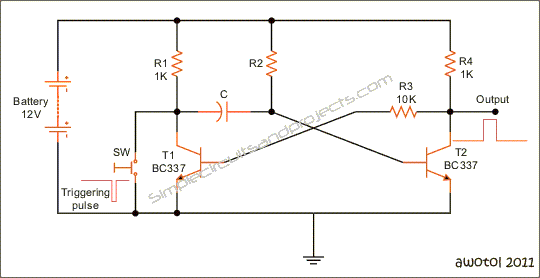
20 kHz Astable Multivibrator with Transistors
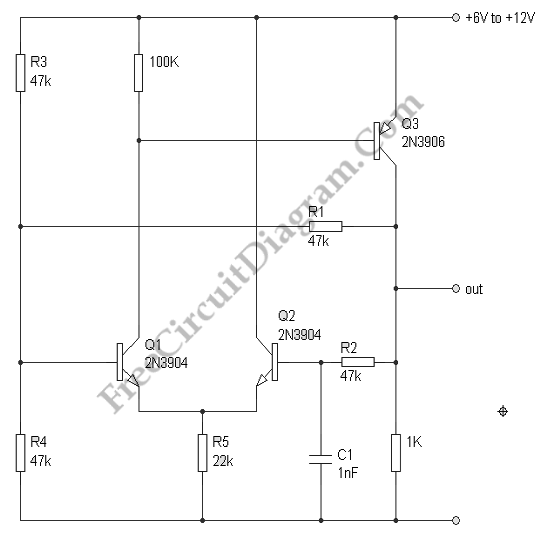
An astable multivibrator, also known as an oscillator circuit, operates on the principle of positive feedback. This type of circuit can be constructed using operational amplifiers, logic gates, or transistors.
An astable multivibrator is a fundamental electronic circuit that generates a continuous square wave output without requiring any external triggering. The circuit consists of two unstable states, oscillating between them, which results in a periodic output signal. The primary components involved in the design of an astable multivibrator include resistors, capacitors, and active devices such as operational amplifiers or transistors.
In the case of a transistor-based astable multivibrator, two NPN transistors can be configured in a feedback loop. The timing of the oscillation is determined by the values of the resistors and capacitors connected to the transistors. When the circuit is powered, one transistor turns on, causing the other to turn off, and vice versa. This switching action creates a square wave output at the collector of one of the transistors.
For an op-amp astable multivibrator, the configuration typically involves connecting the op-amp in a feedback loop with resistors and capacitors. The output oscillation frequency can be adjusted by changing the resistor and capacitor values, allowing for flexibility in design based on application requirements.
The output frequency (f) of the astable multivibrator can be calculated using the formula:
f = 1 / (ln(2) * (R1 + 2R2) * C)
where R1 and R2 are the resistances in ohms, and C is the capacitance in farads. This equation highlights the relationship between the timing components and the frequency of the output signal.
Astable multivibrators are widely used in various applications, including clock pulse generation, LED flashers, and tone generation in audio devices. The simplicity and versatility of the astable multivibrator make it a fundamental building block in electronic circuit design.Astable multivibrator or oscillator circuit is based on positive feedback. We can design such circuit using op-amp, logic gates, or transistors. Here we can. 🔗 External reference
An astable multivibrator is a fundamental electronic circuit that generates a continuous square wave output without requiring any external triggering. The circuit consists of two unstable states, oscillating between them, which results in a periodic output signal. The primary components involved in the design of an astable multivibrator include resistors, capacitors, and active devices such as operational amplifiers or transistors.
In the case of a transistor-based astable multivibrator, two NPN transistors can be configured in a feedback loop. The timing of the oscillation is determined by the values of the resistors and capacitors connected to the transistors. When the circuit is powered, one transistor turns on, causing the other to turn off, and vice versa. This switching action creates a square wave output at the collector of one of the transistors.
For an op-amp astable multivibrator, the configuration typically involves connecting the op-amp in a feedback loop with resistors and capacitors. The output oscillation frequency can be adjusted by changing the resistor and capacitor values, allowing for flexibility in design based on application requirements.
The output frequency (f) of the astable multivibrator can be calculated using the formula:
f = 1 / (ln(2) * (R1 + 2R2) * C)
where R1 and R2 are the resistances in ohms, and C is the capacitance in farads. This equation highlights the relationship between the timing components and the frequency of the output signal.
Astable multivibrators are widely used in various applications, including clock pulse generation, LED flashers, and tone generation in audio devices. The simplicity and versatility of the astable multivibrator make it a fundamental building block in electronic circuit design.Astable multivibrator or oscillator circuit is based on positive feedback. We can design such circuit using op-amp, logic gates, or transistors. Here we can. 🔗 External reference
